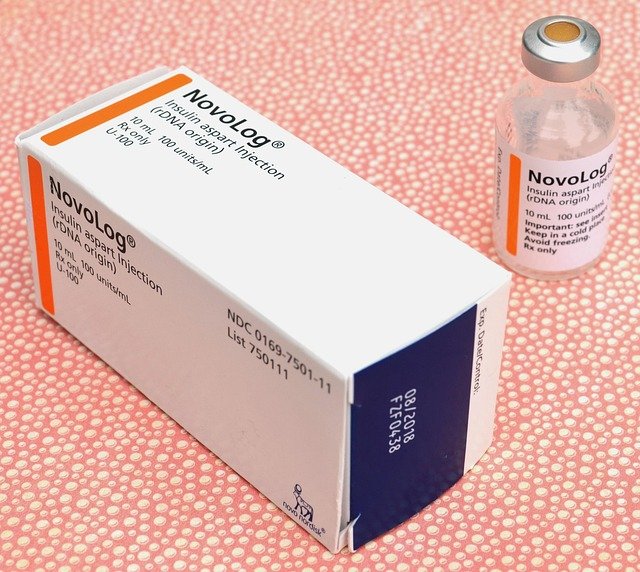Discover the Surprising Impact of Recent Injections on COPD Management
Chronic Obstructive Pulmonary Disease (COPD) treatment has evolved significantly with the introduction of injectable medications. These innovative therapies are changing how healthcare providers approach COPD management, offering new hope to patients who struggle with conventional treatments. Recent advancements in injection-based therapies are demonstrating remarkable results in symptom control and quality of life improvements.

Chronic Obstructive Pulmonary Disease (COPD) remains one of the leading causes of morbidity and mortality worldwide, affecting millions of people with its progressive respiratory symptoms. Traditional management has relied heavily on inhaled medications, oxygen therapy, and pulmonary rehabilitation. However, recent years have witnessed a paradigm shift with the introduction of injectable treatments that target specific inflammatory pathways involved in COPD. These novel approaches are transforming the treatment landscape and offering new options for patients who may not respond adequately to conventional therapies.
Exploring Innovative Treatment Options for COPD
The COPD treatment arsenal has expanded beyond bronchodilators and corticosteroids to include biologic therapies administered via injection. These medications work by targeting specific inflammatory molecules that contribute to airway inflammation and damage. Monoclonal antibodies like mepolizumab and benralizumab, initially developed for severe asthma, are now being studied for their potential benefits in certain COPD phenotypes, particularly those with eosinophilic inflammation. Another promising injectable is alpha-1 antitrypsin augmentation therapy, which replaces the missing protein in patients with alpha-1 antitrypsin deficiency, a genetic form of COPD.
Understanding How New Injections Work
Unlike traditional inhaled medications that provide localized effects in the airways, injectable COPD treatments work systemically by targeting underlying inflammatory processes. Monoclonal antibodies function by binding to specific inflammatory proteins or their receptors, effectively neutralizing their activity. For instance, mepolizumab targets interleukin-5 (IL-5), a key molecule in eosinophil production and survival. By reducing eosinophil levels in the blood and tissues, these injections may decrease airway inflammation and potentially reduce exacerbation frequency in select COPD patients. Other injectables target different inflammatory pathways, including interleukin-1 and tumor necrosis factor-alpha, which play significant roles in the inflammatory cascade associated with COPD.
Evaluating Potential Side Effects of COPD Injections
While injectable treatments offer promising benefits, they come with their own set of potential adverse effects that patients and healthcare providers should consider. Common side effects include injection site reactions such as pain, redness, and swelling. Systemic reactions may include headache, fatigue, and back pain. More serious but rare complications can include hypersensitivity reactions and increased risk of certain infections due to immune system modulation. Unlike inhaled medications that primarily affect the lungs, injectable biologics affect the entire immune system, potentially altering the body’s defense mechanisms. Patients with a history of parasitic infections or active tuberculosis may require additional screening before starting these therapies. Regular monitoring is essential to ensure the benefits outweigh any potential risks.
Expert Insights on the Future of COPD Management
Pulmonologists and respiratory specialists are cautiously optimistic about the role of injectable therapies in COPD management. Medical experts in the respiratory field suggest that targeted biologic therapies represent a promising frontier in COPD treatment, especially for patients with specific inflammatory profiles. Research continues to focus on identifying biomarkers that can predict which patients will respond best to these treatments. Clinical trials are also exploring combination approaches that pair injectable biologics with traditional therapies to maximize benefits. The GOLD (Global Initiative for Chronic Obstructive Lung Disease) guidelines have begun acknowledging the potential role of these treatments in specific patient populations, though they emphasize the need for further research to establish definitive recommendations for widespread use.
Comparing Injections to Traditional COPD Therapies
Understanding how injectable treatments compare to established COPD therapies helps patients and healthcare providers make informed decisions. While traditional bronchodilators and inhaled corticosteroids remain the foundation of COPD management, injectable biologics offer different mechanisms of action and potential benefits for specific patient groups.
| Treatment Approach | Delivery Method | Frequency | Primary Mechanism | Best For |
|---|---|---|---|---|
| Bronchodilators | Inhaled | Daily or twice daily | Airway relaxation | All COPD patients |
| Inhaled Corticosteroids | Inhaled | Daily | Local inflammation reduction | Patients with frequent exacerbations |
| Monoclonal Antibodies | Injection | Monthly or bi-monthly | Targeted inflammatory pathway blocking | Eosinophilic phenotype |
| Alpha-1 Antitrypsin | Injection | Weekly | Protein replacement | Alpha-1 deficiency |
| Roflumilast | Oral | Daily | PDE4 inhibition | Severe COPD with chronic bronchitis |
Prices, rates, or cost estimates mentioned in this article are based on the latest available information but may change over time. Independent research is advised before making financial decisions.
The cost of injectable biologics remains a significant consideration. Most of these treatments range from $15,000 to $40,000 annually, substantially higher than conventional inhaler therapies. However, for patients with frequent hospitalizations due to COPD exacerbations, these treatments may prove cost-effective in the long run by reducing emergency care needs. Insurance coverage varies widely, with many plans requiring prior authorization and documentation of failure with standard therapies before approving these newer treatments.
Patient experiences with injectable COPD treatments have been mixed but generally positive among those who respond well. The convenience of less frequent dosing (typically monthly or bi-monthly injections versus daily inhalers) improves adherence for some patients. However, the need for regular clinic visits for administration can be challenging for those with mobility issues or limited access to specialized care centers. Support programs from pharmaceutical manufacturers often help mitigate financial barriers, providing assistance to eligible patients who might otherwise be unable to access these treatments.
As research continues, the role of injectable therapies in COPD management will likely evolve. Current evidence suggests these treatments work best as part of a comprehensive management plan rather than standalone options. The personalized medicine approach—matching specific treatments to individual patient characteristics—represents the future direction of COPD care, with injectable biologics playing an increasingly important role in this tailored approach.
This article is for informational purposes only and should not be considered medical advice. Please consult a qualified healthcare professional for personalized guidance and treatment.



